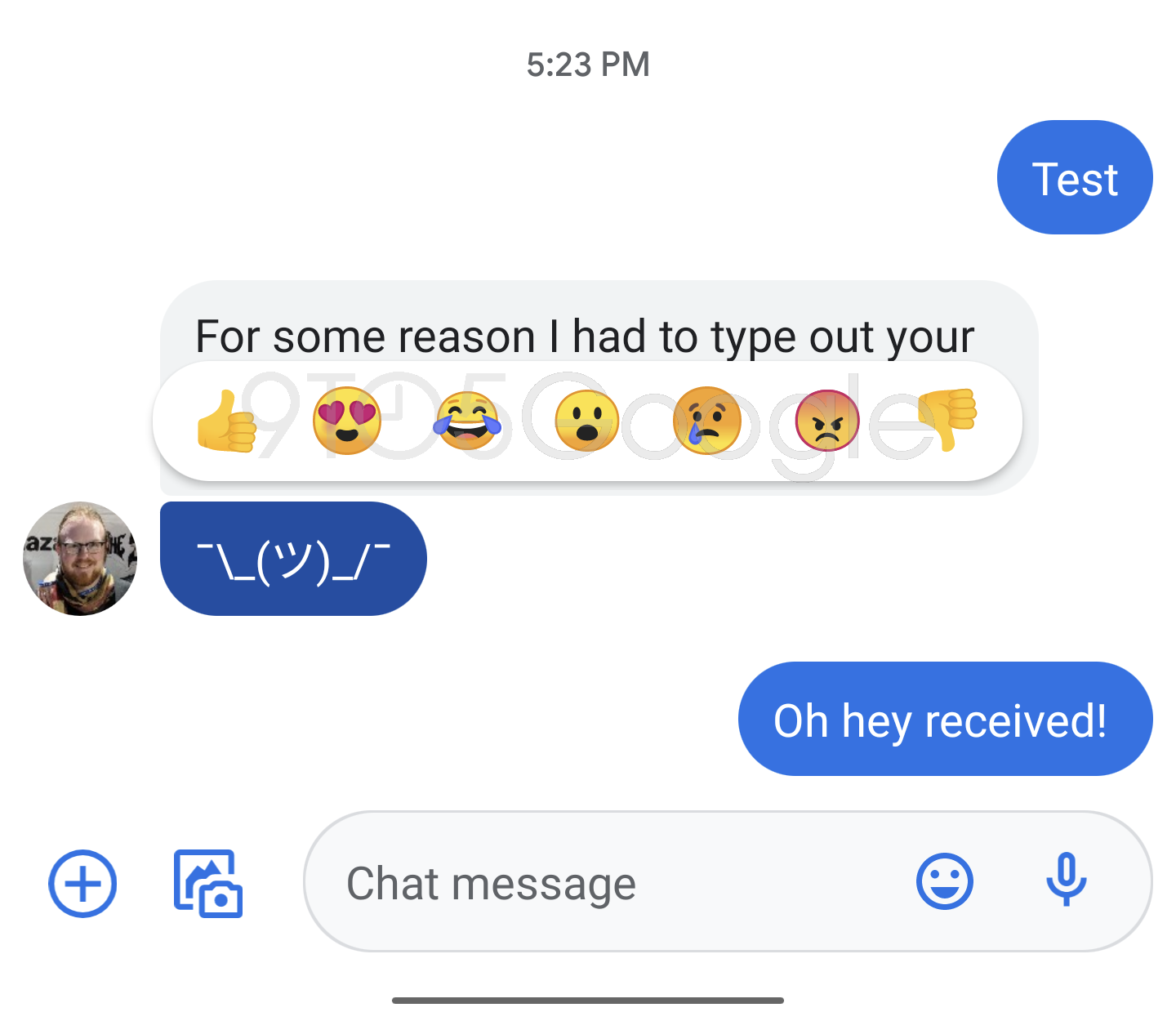Set up your phone number
IMessage lets you send and receive SMS-like text messages, and MMS-style multimedia messages just like a phone through your iCloud account. Instead of just a phone number, however, it can use your email address, and it only works with other iPads, iPhones, and Macs. Fake Text Message is a tool to create a Fake Text Conversation and a Fake iMessage.
On your iPhone:
- Go to Settings > Messages and make sure that iMessage is on. You might need to wait a moment for it to activate.
- Tap Send & Receive. If you see “Use your Apple ID for iMessage,” tap it and sign in with the same Apple ID that you use on your Mac, iPad, and iPod touch.
- In the 'You can receive iMessages' section, make sure that your phone number and Apple ID are selected.
- Go to Settings > FaceTime and make sure that your phone number and Apple ID are selected in the 'You can be reached by FaceTime at' section.
On your other devices, you can now turn on the phone number that you just set up:
If you use this feature and share your Apple ID with someone, you can't prevent them from seeing your conversations. Instead of using the same Apple ID as someone else, set up Family Sharing.
Remove your phone number
If you don't want calls or messages for your iPhone on your iPad, iPod touch, or Mac, you can remove your phone number. There are two ways to do this:
- On your iPhone, go to Settings > Messages > Send & Receive. Select your Apple ID at the bottom of the screen and tap Sign Out. Then go to Settings > FaceTime, select your Apple ID and tap Sign Out.
- If the phone number that you want to remove belongs to an iPhone that you can't access, change your Apple ID password. This removes all phone numbers from your iPad, iPod touch, and Mac. Calls or messages for the removed numbers won't appear on those devices anymore.
If you have questions, contact Apple Support.

Turn your phone number on or off for your Mac
After you set up your phone number, you can turn it on or off for Messages and FaceTime on your Mac.
- Open Messages or FaceTime. If asked, sign in with the Apple ID that you're using with Messages and FaceTime on your iPhone.
- For Messages, choose Messages > Preferences, then click iMessage. For FaceTime, choose FaceTime > Preferences, then click Settings.
- Turn your phone number on or off:
- To turn on your phone number, select it and your Apple ID in the list. If you don't see your phone number, get help with your settings or contact Apple Support. If you see a number that isn't yours, change your Apple ID password.
- To turn off your phone number, deselect it in the list.
- If you want recipients to see your phone number and not your Apple ID, select your phone number from the “Start new conversations from” or ”Start new calls from” pop-up menu.
Learn how to make messages that you send and receive on your iPhone appear on your Mac, iPad, and iPod touch.
Turn your phone number on or off for your iPad or iPod touch
After you set up your phone number, you can turn it on or off for Messages and FaceTime on your iPad or iPod touch.
- For Messages, go to Settings > Messages and make sure that iMessage is on. If asked, sign in with the Apple ID you're using with Messages and FaceTime on your iPhone. Then tap Send & Receive.
- For FaceTime, go to Settings > FaceTime. If asked, sign in with the Apple ID that you're using with Messages and FaceTime on your iPhone.
- Turn your phone number on or off:
- To turn on your phone number, select it and your Apple ID in the “You can be reached” section. If you don't see your phone number, get help with your settings or contact Apple Support. If you see a number that isn't yours, change your Apple ID password.
- To turn off your phone number, uncheck it.
Learn how to make messages that you send and receive on your iPhone also appear on your Mac, iPad, and iPod touch.
If you can't see or select your number in Messages or FaceTime
- Make sure that you're using the latest software for your Mac or iOS device.
- Make sure that you correctly followed the iPhone steps to set up your phone number. You should be using the same Apple ID on all of your devices.
- In the “You can be reached” section of Messages and FaceTime settings, make sure that there are checkmarks beside your phone number and Apple ID:
If your phone number is unchecked and you can't select it, or you have some other issue, follow these steps:
- On your Mac:
- In Messages, choose Messages > Preferences, then click iMessage. Click Sign Out.
- In FaceTime, choose FaceTime > Preferences, then click Sign Out.
- On your iPhone, iPad, and iPod:
- Go to Settings > Messages > Send & Receive. Tap your Apple ID, then tap Sign Out.
- Go to Settings > FaceTime. Tap your Apple ID, then tap Sign Out.
- On your iPhone:
- Go back to Settings > Messages and make sure that iMessage is turned on.
- Tap Send & Receive, then choose “Use your Apple ID for iMessage” and sign in with your Apple ID.
- Using the same Apple ID, sign back in to Messages and FaceTime on your other devices.
If you still need help, change your Apple ID password and repeat the setup steps. If that doesn't work, contact Apple Support.
SMS text messages are pretty standard on all phones, so it's the best way to communicate with people who use all kinds of service or operating system. iMessage, on the other hand, is proprietary and specific to Apple. This means that not everyone can communicate with you if you insist on using it because not everyone is part of the Apple ecosystem. How do you send texts instead of iMessages on your iPhone, though? Let's take a look at a few different methods that allow you to easily do this:
Can you relate to this scenario? Many iPhone users do, and it is not funny when you lose that precious information you put down in your Notes. Nevertheless, there are things you can do to fix the problem of your notes getting deleted randomly by your iPhone. We will look at some solutions, but let us find out what causes iPhone to delete notes randomly first.
1 Change iMessages to Text Messages by Pressing iMessages
You can do this by long-pressing the iMessages:
1. When you are done creating your message, you can send it off as you normally do.
2. Long-press and keep your finger on the body of the message (kind of like you do when you are playing with the copy and paste function).
3. A little dialog box will come up giving you a couple of options. One of those should be 'Send as Text Message'. Tap that, and your iMessage will be turned into a text message.
For this to work, you must press it quickly after you tapping the Send button, before the iMessage has arrived to its recipient.
2 Turn Off Your Wi-Fi and Cellular Data
Follow these steps to turn these off:
- Go to Settings and go into the Wi-Fi/WLAN section.
- Turn the Wi-Fi/WLAN off with the switch.
- Go back to the main Settings screen, and tap Cellular.
- Tap the switch to turn your data off.
You can now text your recipient. Since data and Wi-Fi are turned off, your phone will default to standard SMS texts.
3 Turn Off iMessage on iPhone
You can also simply turn off iMessage. Do this by following these steps:
- Go to Settings on your iPhone.
- Tap Messages.
- Change the iMessage switch to OFF.
You can also optionally turn off MMS messages if you don't want to send larger multimedia texts, such as texts that have attachments or that are very long.
The Importance of Backing Up Your Messages
Regardless of whether you use iMessage or standard SMS text messages, you could potentially lose all of your important saved communication if something happened to your phone. That is why using an application like iMyFone D-Port iPhone Data Exporter can be a life-saver. Once data is lost, it's hard to recover, so it's always best to take preventative measures.
4 Back Up Messages and iMessages on iPhone
D-Port helps you back up your data from your iPhone in a few easy clicks, including your text messages and iMessages. It has a lot of great features, including:
iMyFone D-Port iPhone Data Exporter
Key Features:

- The ability to export both textual content and attachments, such as pictures, videos and audios in message conversations.
- The ability to export from any iOS device, including iPad, iPhone, and iPod touch of iOS 12/11.4/11.3/11.2/11.
- You can preview your data before you back it up, so that only important files are moved.
- D-Port supports 20 types of files, including WhatsApp, notes, voice memos etc.
- You can use D-Port to check your iTunes backup without restoring it to your device.
How to Transfer Text Messages and iMessages from iPhone to Computer
You can easily transfer your text messages and iMessages from your iPhone to your computer by following these steps:
Step 1. Choose Data You Need to Back Up
Download D-Port from the iMyFone official website and install it on your computer. Click 'Export from iOS Device' and click 'Start' to select the files that you want to transfer. Here you can check Message and it will includes text messages and iMessages, then click 'Next.'
How To Change Imessage To Text Message
Step 2. Connect and Scan All Messages on iPhone
A message should come up on the screen telling you that you can now connect your iOS device to your computer. Do so at this time using your USB cable. And click 'Scan' to search text messages and iMessages on your iPhone.
Step 3. Preview and Back Up iPhone Messages
After scanning, D-Port will display all the messages on your iPhone. You can preview them and check the text messages and iMessages you need to back up. Then click Export to transfer them from iPhone to computer.
In summary, there are three main ways to change iMessages into text messages. The first is to long-press the message while it's sending and quickly switch it to text. Next, you can turn off all your WI-FI and data connections to force your phone into using SMS only. Finally, you can just turn off iMessage in the settings.
Are Imessage And Text Message The Same
For backing up your messages (which is extremely important), a great application to use is iMyFone D-Port iPhone Data Exporter. You can get a free trial version of this software, so there's no risk in giving it a try.
